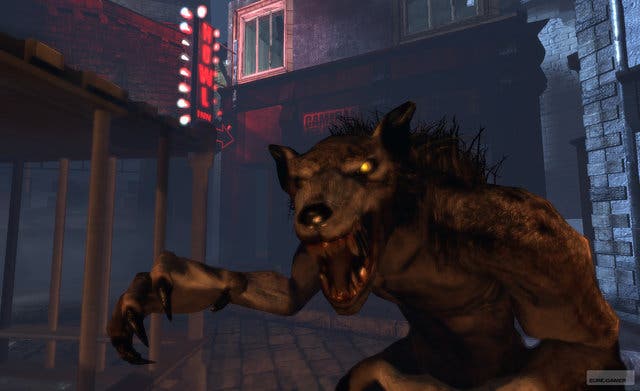Legendary
Not really.
Such clumsy construction is found in abundance throughout, with Spark's fondness for lazy and linear design on shameless display. Is there a bit where you have to make your way down a train track, dodging trains? Of course. Sewer levels? You betcha. Inexplicable jets of flame that switch on and off so you can pass? Yes, yes, a thousand times yes. Even potentially good ideas get dragged down to the most basic level. The vast open space of Times Square, a fantastic location for a pitched FPS battle, is predictably transformed into something more manageable by some remarkably precise destruction which shapes the rubble and debris into a series of narrow, winding corridors. Interactive objects glow bright green, rendering the occasional puzzles completely redundant, while the game constantly reminds you which buttons to hold down to perform basic tasks.
The poor decisions don't end there. Your interaction with Pandora's Box has left you with a supernatural brand on your left arm. This allows you to absorb Animus Vitae, the life force of defeated creatures, which you can then use to unleash a pulse attack, top up your health or charge up essential mission objectives. So your most valuable game resource is dropped by every single monster but must serve multiple functions, often at the same time. In a better designed game, this dichotomy could lead to some interesting tactical problems.
Here, it's simply annoying. The game spams you with respawning creatures and uncannily accurate evil soldiers, but because they exhibit absolutely no evidence of AI, there's never any breathing space to fight tactically. Werewolves, for instance, can only be killed by decapitation. They scamper and claw at you, but once they're down you can switch to your axe and frantically swing away at their neck, dozens of times, until the game decides you've hit the exact spot required and the creature dies. Absorbing Animus means standing still and holding a button, and topping up your health is the same. Neither is realistically possible in the middle of a fight, since enemies just come lurching towards you constantly, taking off huge chunks of health with each hit.

Graphically, it's every bit as bad as Turning Point, with character models that are consistently and horribly outdated. I actually made a note that the inclusion of creepy mannequins was a rip-off from Condemned, until I realised that these pale, featureless automatons were supposed to be civilians. There's a character who I assume is supposed to be your sexy female companion, but she looks like Mr Punch and sounds like Margaret Thatcher and I couldn't wait to get far away from her freakish hooked nose and flat, painted, staring eyes.
Glitches are frequent, with objects getting stuck through walls and NPCs jittering around like marionettes. Needless to say, the frame rate is nothing to write home about. Once again, Spark has managed to take Unreal engine 3 and make it look like a 1997 Half-Life mod. Try to slurp up some Animus while the game simultaneously tries to render flames and smoke, and you'll get a lovely psychedelic slideshow. What makes it all the more galling is the occasional moment where the game actually looks pretty good. There's a giant golem made from cars and rubble in the third chapter that is genuinely impressive - though the manner of its defeat is typically pedestrian - and there are enough moments of subtle lighting sprinkled throughout to suggest that there were at least some people involved who knew what they were doing.
Legendary is the gaming equivalent of cheap supermarket own-brand beans, but instead of costing eleven pence it costs the same as a prime steak cooked by a top chef. It's a bad, bad game. One of the worst I've played on this generation of consoles, in fact. In that regard, at least, the title is surprisingly accurate.

